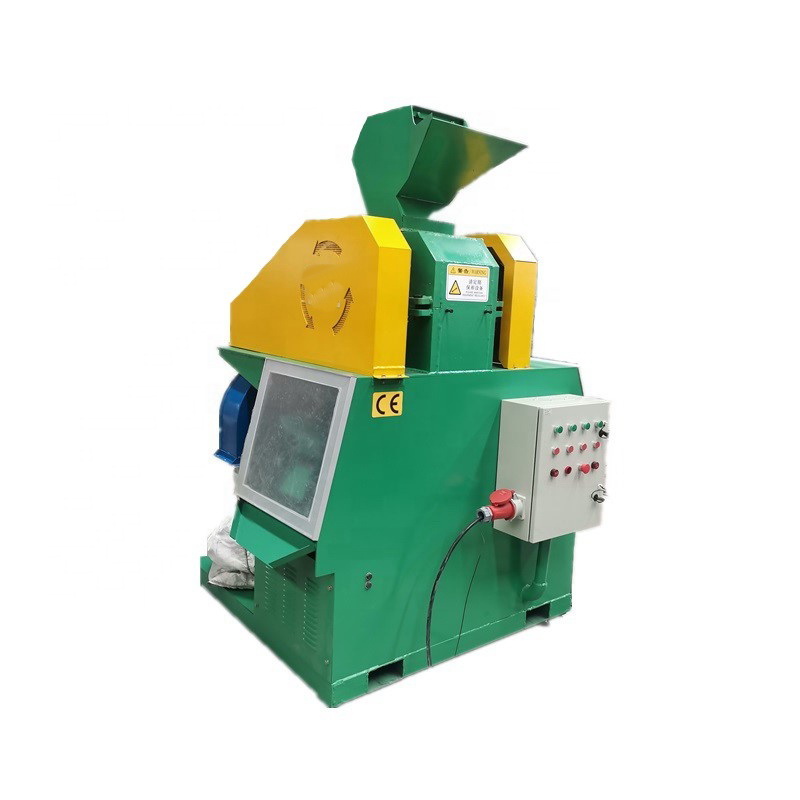

Aug . 21, 2024 20:39 Back to list
The Price of Eddy Current Separators Factors and Trends
Eddy current separators are advanced technologies used primarily in the recycling industry for the separation of non-ferrous metals from a mixture of materials. Their efficiency and effectiveness have led to a steady increase in demand for these machines. However, the price of eddy current separators can vary significantly based on several factors. Understanding these factors is crucial for businesses looking to invest in this technology.
Technology and Design
The core function of an eddy current separator is based on the principle of electromagnetic induction. When a non-ferrous metal passes through the magnetic field produced by a rotating magnetic drum, eddy currents are generated, causing the metal to be expelled from the non-metal materials. The complexity and sophistication of the technology involved in an eddy current separator can greatly influence its price. For instance, separators with advanced features, such as adjustable magnetic fields, automated control systems, and higher separation efficiencies, tend to be more expensive.
Size and Capacity
The size and processing capacity of the separator also play a pivotal role in determining its price. Larger machines capable of handling higher tonnages naturally command higher prices due to the increased materials and engineering required for their manufacture. Smaller operations might opt for compact models, which are generally less expensive but may not be suitable for large-scale recycling efforts.
Brand and Manufacturer
The reputation and reliability of the manufacturer can significantly affect the price. Established brands with a long history of producing high-quality machinery may charge a premium for their equipment. Additionally, companies with strong customer service and warranty programs may offer products at higher price points, as customers are willing to pay more for reliability and post-purchase support.

Customization and Additional Features
Businesses looking for specific features or customizations tailored to their operations may encounter increased costs. Custom-built eddy current separators designed for unique applications will generally be priced higher than standard models. Additional features such as enhanced feed systems, integrated sensors for real-time monitoring, and advanced automation capabilities can further increase the total cost.
Market Trends and Demand
As the recycling industry continues to evolve and grow, the demand for eddy current separators is expected to rise. This increase in demand can lead to fluctuations in pricing. For instance, when global recycling rates improve or when new regulations push for greater recycling efforts, the demand for efficient separation machines can drive prices up. Conversely, in times of economic downturn, prices may stabilize or decrease due to reduced demand.
Geographic Factors
The geographic location of the buyer can also impact the price of eddy current separators. Shipping costs, tariffs, and local market conditions can vary widely, affecting the final price tag. Buyers in areas with high shipping costs may have to budget more for these separators than those located closer to manufacturers.
Conclusion
In conclusion, the price of eddy current separators is influenced by a multitude of factors, including technological complexity, size and capacity, brand reputation, customization options, market conditions, and geographic factors. Businesses should carefully consider these elements when evaluating potential investments in eddy current separators. Ultimately, while initial costs may be significant, the long-term benefits of improved efficiency and increased recovery rates can justify the expenditure, making these machines a valuable asset in the recycling industry. As technology advances and sustainability becomes an even greater priority, the role of eddy current separators will likely become increasingly essential, highlighting their importance in the modern economy.
Latest news
Troubleshooting Common Eddy Separator Problems
NewsJul.04,2025
The Role of Metal Recycling Plants in Circular Economy
NewsJul.04,2025
The Impact of Recycling Line Pickers on Waste Management Costs
NewsJul.04,2025
Safety Features Every Metal Shredder Should Have
NewsJul.04,2025
How Industrial Shredders Improve Waste Management Systems
NewsJul.04,2025
How Cable Granulators Contribute to Sustainable Recycling
NewsJul.04,2025